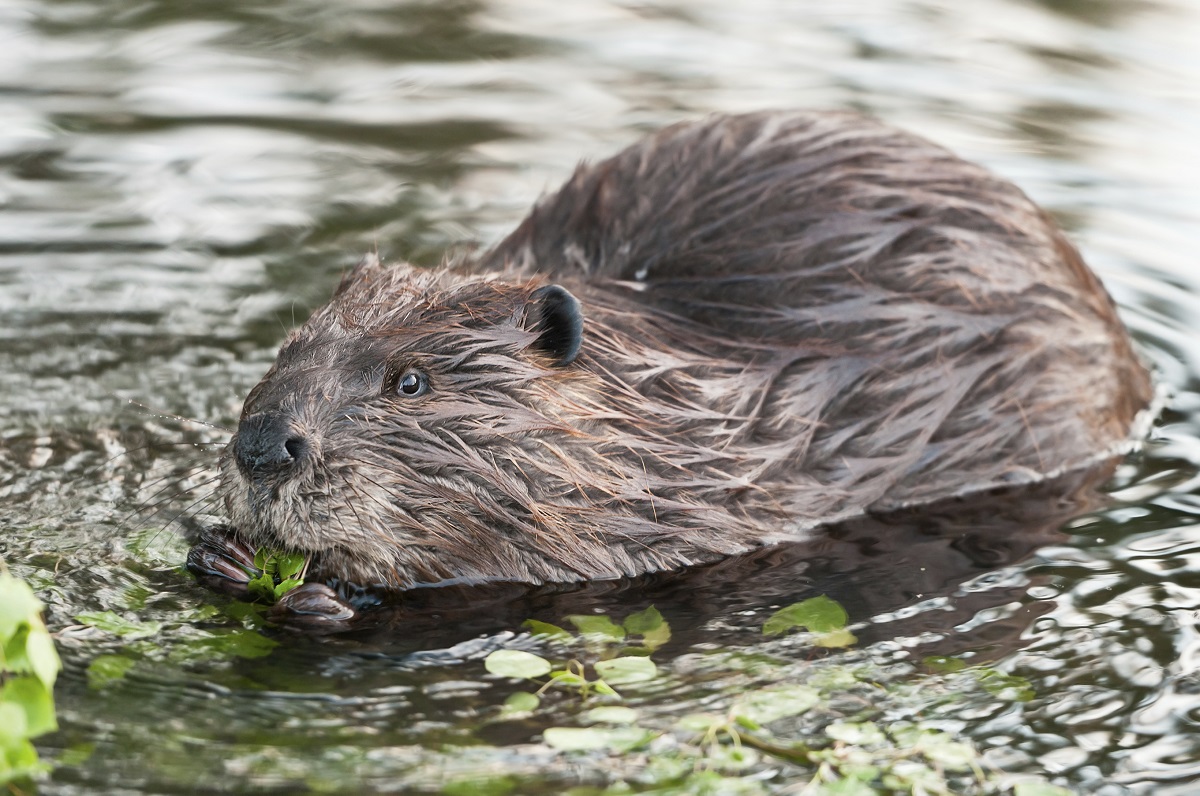
Credit: iStock/S.Hachey.
Name
- Common name: American Beaver
- Scientific name: Castor canadensis
- Order: Rodentia
- Family: Castoridae
Also known as
Beaver
Viewing opportunities
- Any spot where aspen or poplars grow near water is prime beaver habitat. River and lake travellers are in the best positions to view beaver.
- Look for pointed stumps, dome-shaped lodges with nearby underwater branch piles, dams, canals and trails that beaver use for dragging twigs and branches to their ponds.
- Beavers are most active at night, dawn and dusk. They swim with only their heads above water and trail a characteristic "V" wake.
- You can often hear their tail slaps before you see the animal. The tail slaps warns other colony members of a possible danger.
Description
- Dark brown fur and black tail.
- Tail is broad and flat and hairless; up to 30 cm long.
- Hind feet are broad and webbed.
- Has large, orange incisors.
Fast facts
- Length: 50 cm
- Weight: 23 kg
- Lifespan: 15 years
- Predators: River otters, wolves, bears
- Habitat: Wetlands, lake edges and slow moving rivers
Conservation status
- Yukon: S5 (Secure)
- Global: G5 (Secure)
Yukon population estimate
Not determined
Behaviour
Beavers are famous for their impressive lodges and effective dams. Dams can be 3 metres high and hundreds of metres long, effectively blocking off streams to create a pond. Lodges are a mound of logs and mud with a nesting chamber inside that is accessed through an underwater tunnel. Inside the lodge, a pair of beavers that have mated for life will raise their pups.
Diet
Twigs, leaves and buds, or gnaw at soft inner bark.
Distribution
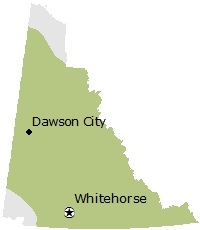
Sights and sounds
env-american-beaver-audio.mp3
Beaver tail slap.
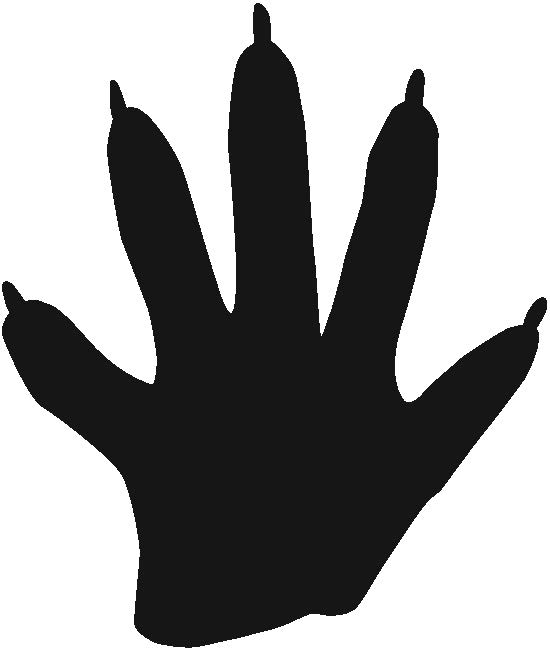
Beaver track, front: 7.5 x 7 cm.
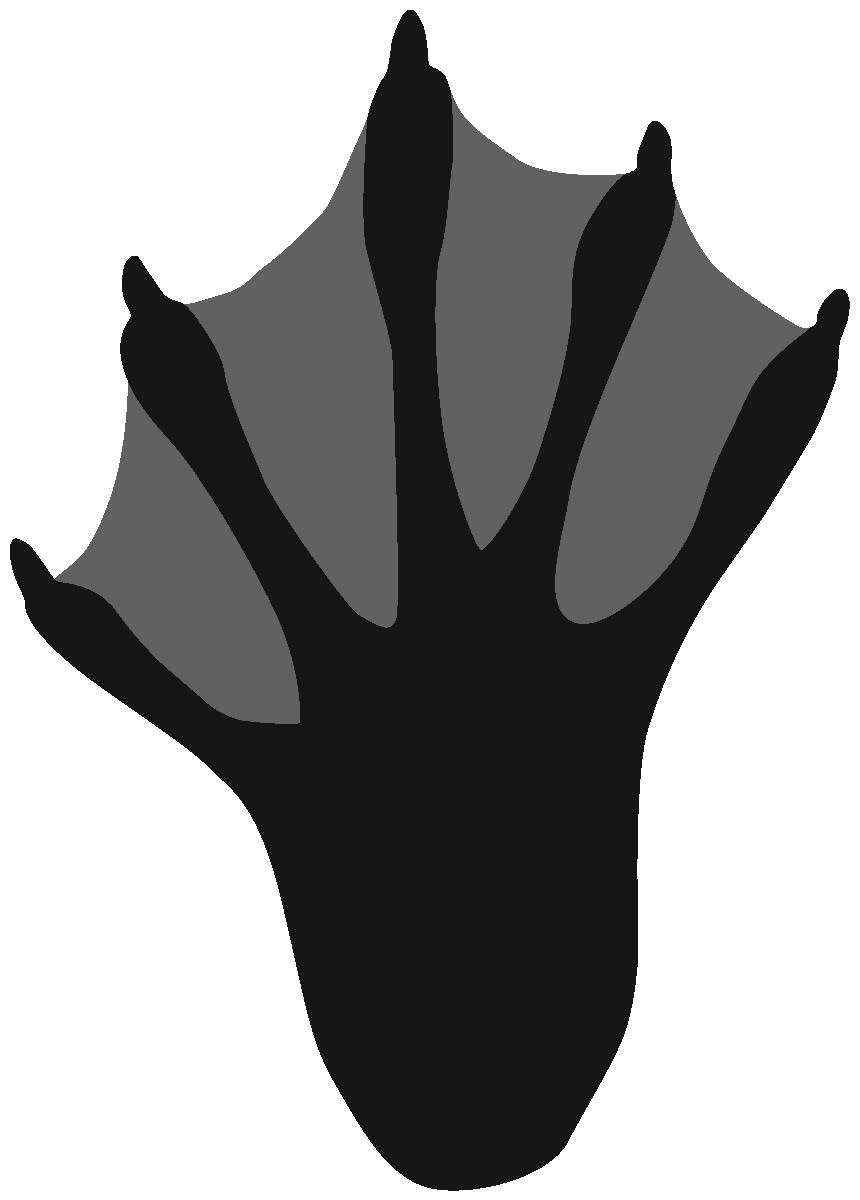
Beaver track, hind: 12.5 x 13.8 cm.
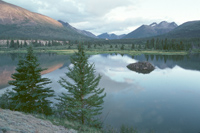
Beaver lodge in pond.
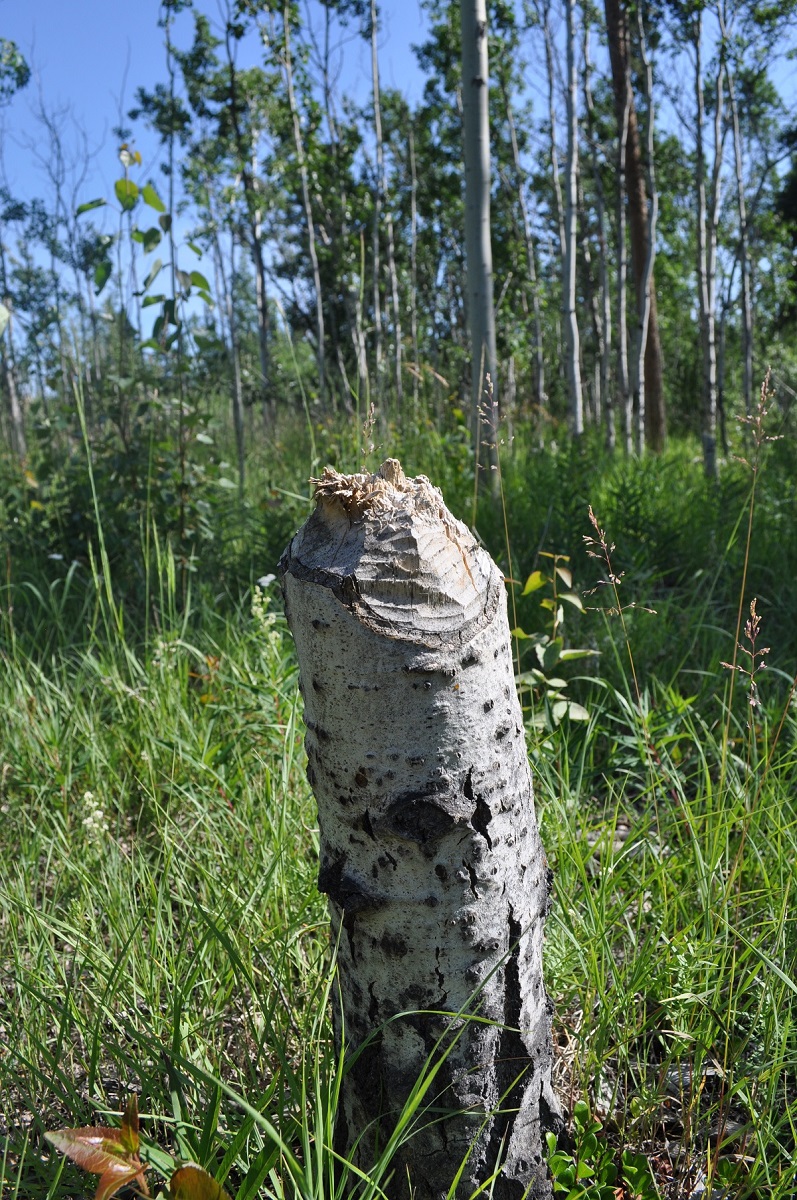
Stump chewed by beaver.
Beavers and people
- In the old days, Yukon First Nations set nets in front of entrances to beaver lodges and used moose-hoof bells to signal a catch.
- The beaver is the most important crest animal or totem for the Tlingit and Tagish people. They call it "Smart Man" because of its ability to cut trees and build dams like people do.
- Beaver are considered to be an “ecological engineer” because they modify or create habitats that are important for a host of other species important to local people. These species include moose and salmon.
- The beaver is Canada’s national emblem. Although its fur may not be as valuable as it once was, the beaver is still valued for food and for its role in wetland creation.